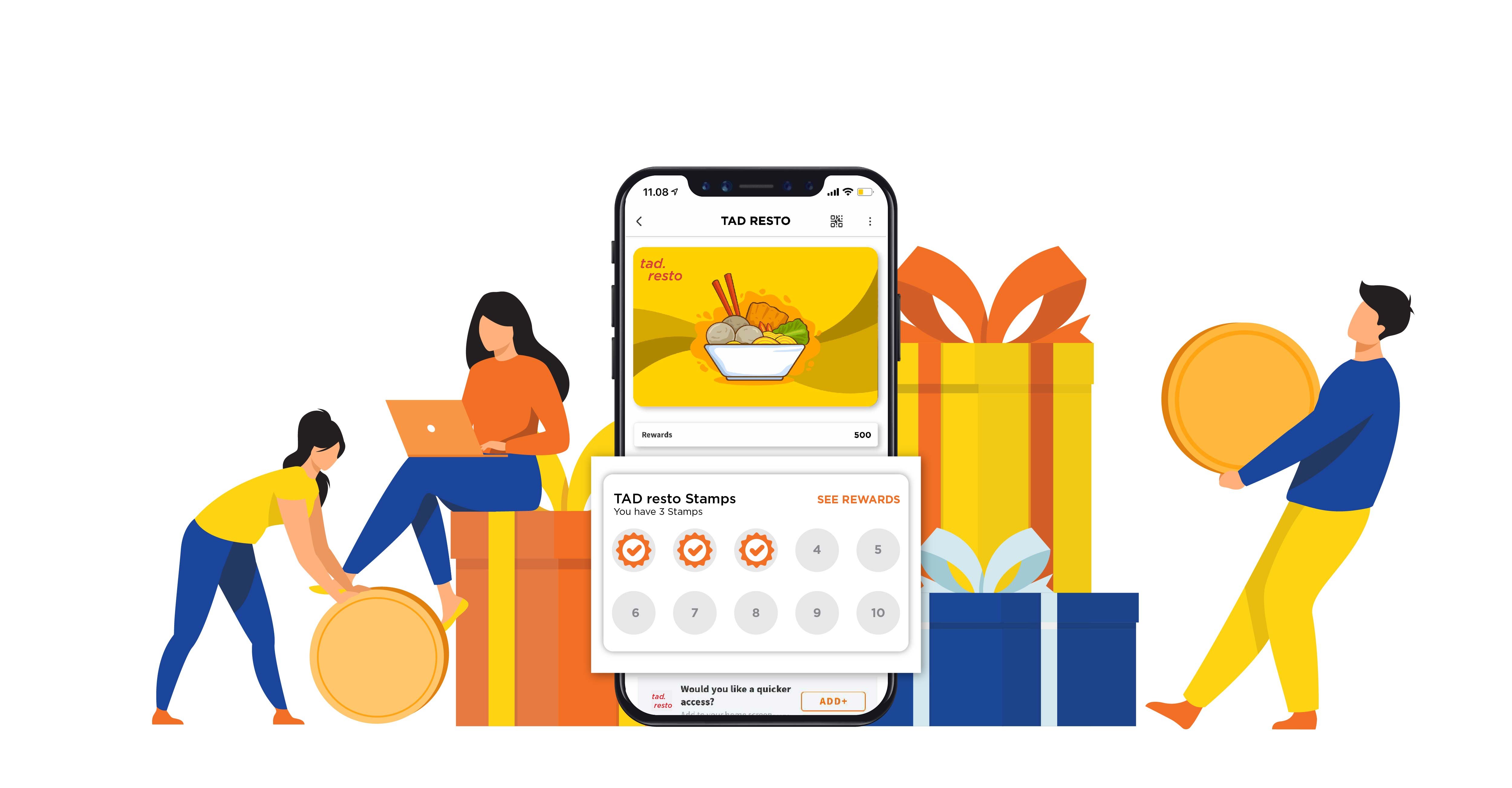
Making customers loyal is the goal of any business. Loyal customers return more often, purchase more, and even bring in valuable new customers. These are benefits businesses can’t resist! Businesses turn to loyalty membership cards to make customers more loyal. However, the work doesn’t end there. Businesses also need to find out if the program is effective in increasing customer loyalty. This measure is known as loyalty marketing metrics.
Loyal customers return more often, purchase more, and even bring in valuable new customers. These are benefits businesses can’t resist!
What are the types of loyalty membership cards for businesses and what are their measurement metrics? Let’s dive into it together!
Types of loyalty membership cards
There are many types of loyalty cards you can go for. Each of them has different strategies to nurture loyalty. Take a look and see which one suits your business best!
-
Point-based loyalty card
Loyalty membership cards that have been known for a long time are point-based ones. It’s very simple: customers earn points whenever they fulfill the pre-determined conditions, such as making a purchase, referring a friend, sharing the business on social media, writing a review, and many more. The accumulated points can then be redeemed into rewards. These days, digital loyalty cards are more widely used than printed cards to ease the points recording and redemption process. -
Paid loyalty card
With paid loyalty cards, customers pay a certain amount to be a ‘VIP’ member. These loyalty cards work best for your most loyal existing customers. They will be lured by exclusive benefits they can enjoy that set them apart from regular customers. If they see that the benefits far outweigh the fee, they will be more interested to join. -
Tiering loyalty card
Tiering loyalty membership cards focus on tiers or levels that customers need to reach to enjoy certain benefits. The higher they are on the tier, the more benefits they gain. This system instills competitiveness of customers and can be gamified further with weekly contests or badges on their digital loyalty card to make it more engaging and fun. -
Engagement loyalty card
To nurture loyalty, you don’t only need points or rewards. You can also boost engagement and stay connected with customers, making them feel like they have a personal relationship with your business. For example, if you are a sports business, your loyalty membership card can be a program that gives motivations, reminders, tips, and games related to sports and fitness. That way, you will stay on top of customers’ minds in their daily routines. -
Community loyalty card
A community loyalty membership card is another unique card type and can be complemented with point-based or tiering system. Connect customers with like-minded people and let them discuss topics, share recommendations and experiences, and enjoy other benefits! This type of program will also be much easier to implement with a digital loyalty card.
Did you find a loyalty card type that matches your business needs? After choosing and applying it, you also need to evaluate whether it is effective in increasing loyalty through loyalty marketing metrics.
Loyalty marketing metrics
There are many loyalty marketing metrics that reflect the measure of customer loyalty. Here is each one and how to calculate them.
-
Net Promoter Score (NPS)
Net Promoter Score (NPS) is calculated based on a simple question: from a scale of 1-10, how likely are customers to recommend your business? The score they give is a reflection of how satisfied they are with you.
Based on the score, customers can be divided into several categories. If they give a score of 1-6, they belong in the detractor group. These are your most dissatisfied customers. Next, if they give a score of 7-8, they are the passives—they are satisfied, but needs more motivation or incentives to recommend you. The highest scores, 9-10, place customers as promoters, your best bet in improving loyalty! They are not only satisfied and loyal but also willing to be your advocates.
After obtaining the scores, you can calculate NPS as follows:
NPS = percentage of promoters – percentage of detractors -
Repurchase Ratio
Repurchase Ratio reflects how many of your customers are willing to do a repurchase. This ratio shows whether you still need to work on making customers come back. If you have more repeat customers, your customer acquisition cost will greatly decrease. You can calculate Repurchase Ratio using this formula:
Repurchase Ratio = number of repeat customers / number of one-time customers -
Customer Lifetime Value (CLV)
Customer Lifetime Value (CLV) is another important loyalty marketing metric. This metric is the estimate of total revenue one customer contributes to your business throughout their lifetime. CLV is calculated with this formula:
CLV = average value of purchase x number of purchases per year x average time as a customer (in years)
CLV shows which customers are the most loyal and worth investing in. However, a low CLV doesn’t always mean you must bid farewell to them. You can still increase CLV by modifying your loyalty program offers. -
Customer Loyalty Index (CLI)
The next loyalty marketing metric is Customer Loyalty Index or CLI. This metric combines several factors such as NPS and Repurchase Ratio. To measure CLI, customers need to answer these 3 questions from a scale of 1 to 6:
- How likely are you to recommend us?
- How likely are you to repurchase?
- How likely are you to try other products from us?
CLI is the average of these three scores. It gives a clearer picture of loyalty because it considers many different factors, and helps you predict how likely they are to be retained.
A low CLV doesn’t always mean you must bid farewell to them. You can still increase CLV by modifying your loyalty program offers.
Key Takeaways
Loyal customers play a huge role in boosting business sustainability and revenue as they return more often, purchase more, and help being business advocates. Loyalty membership cards such as point-based, tiering, and engagement loyalty cards are a great way to retain and reward customers. You can choose them based on your business needs and the behavior of your customers. After choosing one, don’t forget these loyalty marketing metrics such as the Customer Lifetime Value (CLV) and Customer Loyalty Index (CLI) to measure the effectiveness of your program in increasing loyalty!
Still not sure what your customer base is like and which loyalty membership card suits them best? TADA has created loyalty solutions for many businesses and we’ll be happy to help you! Contact us and start your journey with us today.



.png)
